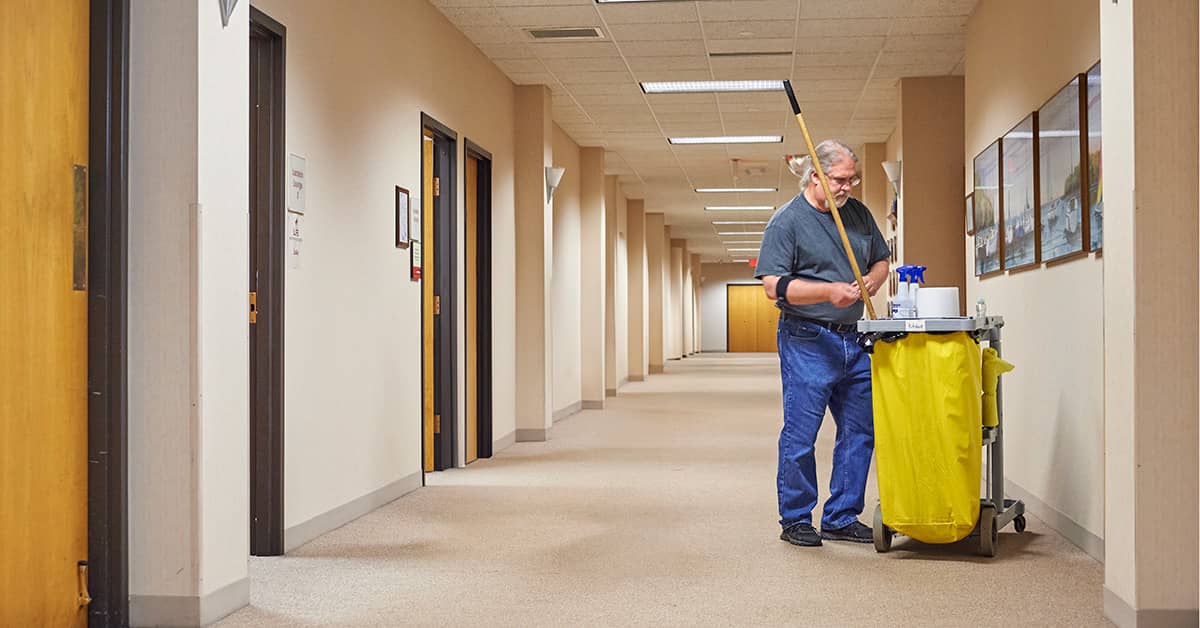Employees can work alone, but should they?
Date Posted: 02/26/2024

Despite a common misconception, OSHA doesn’t say much about whether employees can work alone. A few OSHA rules address the issue, mostly for emergency response situations, interior structural firefighting, or working in permit required confined spaces. In most cases, employers can allow employees to work alone, but that doesn’t mean employers should allow this.
For some jobs, working alone is unavoidable, such as a night security guard. Even so, a guard should have a way to communicate with others in an emergency. OSHA encourages employers to develop emergency procedures and provide communication options (like cell phones) for employees working alone. However, OSHA cannot actually enforce that recommendation.
For other positions, employers should evaluate the potential risks and determine if someone can work alone without undue risk.
What prompted the concern?
If you’ve wondered whether a particular employee could safely work alone, you should first evaluate why that concern arose. Questions to consider might include:
- What hazards will the employee face, and what is the likelihood that the employee would need assistance in an emergency? For cuts, scrapes, trips, and minor injuries, the employee might simply call for help using a cell phone. But some risks create the potential for more serious incidents.
- Did the concern arise because of external threats, such as a lone security guard who could face a violent situation? Or did the concern arise because of job-related hazards, such as working with dangerous equipment?
- Can the employee be given a cell phone or emergency number? Could another employee or manager be on-call, and would the on-call person be able to respond in a timely manner?
Keep in mind that security cameras don’t improve the employee’s safety. If an incident occurred, video recordings might help determine what happened, but cameras cannot prevent an incident from occurring.
Working with the worker
When a job requires working alone, you’ve presumably selected a responsible and trustworthy employee. The individual should be trained to recognize hazards and should clearly understand that he or she must use caution and avoid tasks that create an unacceptable level of risk.
If certain projects don’t get completed because the employee felt uncomfortable tackling a task, be wary of reprimanding the individual for “not doing the job.” You may be inadvertently encouraging the employee to take greater risks. Instead, ask the employee to explain why the task couldn’t be completed, and try to think of alternative procedures that might get the job done with lower risk.
Establishing a check-in procedure could also be an option. Determine how the worker should check in, with whom, and how frequently (e.g., calling a manager’s cell phone every two hours, or before starting a particular task). In addition, decide on a response if the employee misses a check in. Will the manager visit the site to check on the worker?
Ultimately, the employer must balance the potential risks to someone working alone against the costs of scheduling a second worker, or the costs of taking other measures that could minimize those risks. Those other measures may range from having someone on-call to simply delaying certain tasks until additional workers are on duty.
How Safety Management Suite Can Help
Although OSHA doesn’t say much about employees working alone, your peers may have best practices, suggestions, and even policies they’ve created around that topic. Our Discussion Tool in the J. J. Keller® SAFETY MANAGEMENT SUITE is a great place to pose your questions and get feedback from your peers on what works for them.
E-mail Newsletter
Sign up to receive the weekly EHS Insider email newsletter for safety articles, news headlines, regulatory alerts, industry events, webcasts, and more.